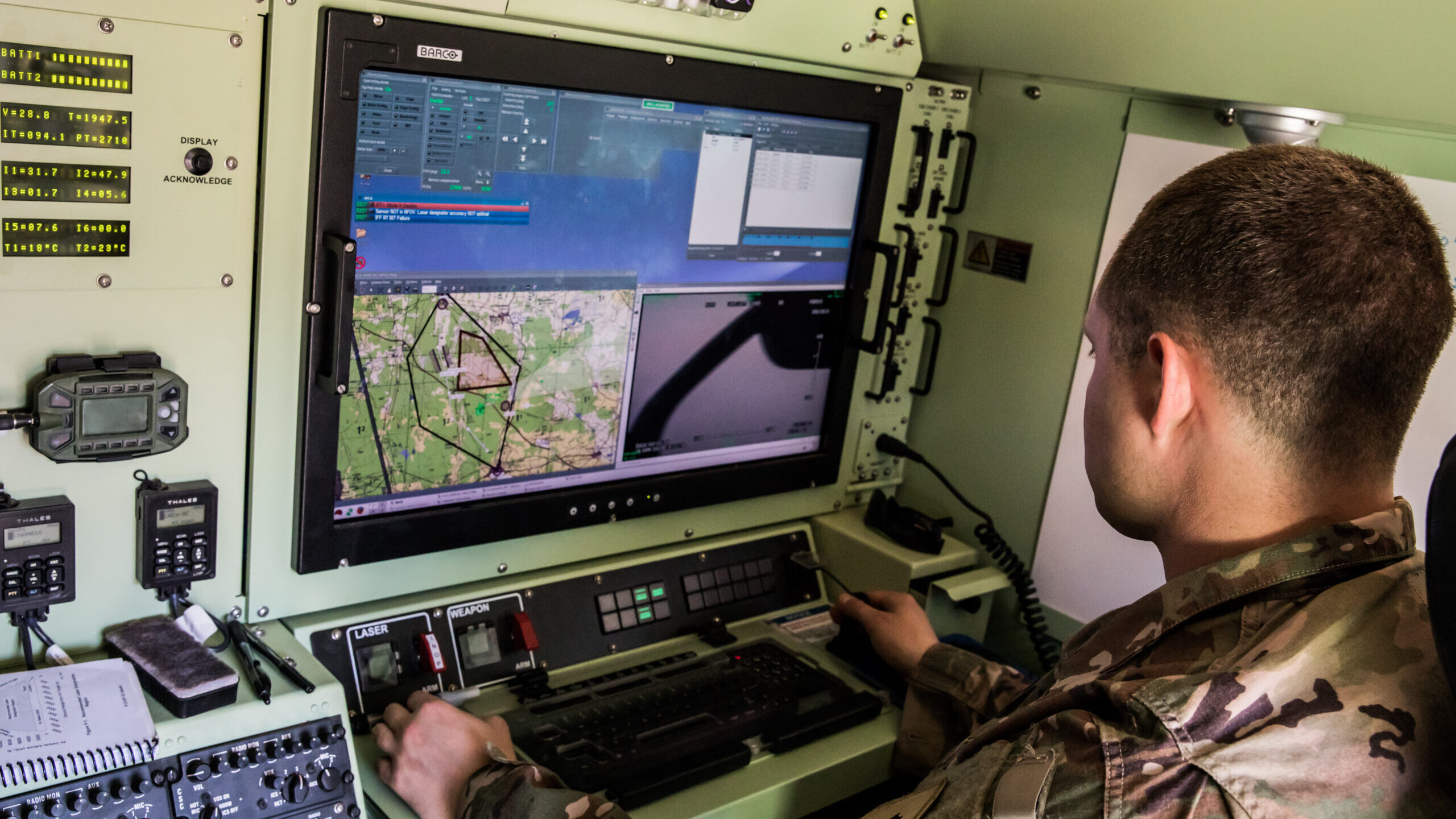BRAD D. WILLIAMS

AUSA: Fresh off winning a contract to design a new signals intelligence sensor prototype for the Air Force, Northrop Grumman is now looking to leverage the same high-altitude intelligence, surveillance, and reconnaissance (ISR) capabilities to enable the Army’s Multi-Domain Operations.
The defense contractor last week announced the Air Force selected it to design a prototype for new SIGINT sensing and payload tech, dubbed GHOST (Global High-altitude Open-system Sensor Technology). GHOST operates within Northrop’s SAGE, a cloud-based SIGINT systems architecture. (SAGE, the company said, is not an acronym.)
Northrop thinks SAGE could be adopted by the Army as the service looks to modernize and bolster ISR capabilities as part of its Concept for Intelligence 2028. An element of the Army’s vision includes Multi-Domain Sensor Systems, or MDSS, which “will deliver the right information at the right time to the right decision makers as a critical enabler for [long-range precision fires], [electronic warfare], cyber effects, and [command and control] functions,” according to the 2028 document.
MDSS, Northrop’s VP of the Cyber and Information Solutions Business Unit Jennifer Walsmith told Breaking Defense, is “so important to the future Army airborne SIGINT payload initiative, which will ultimately be integrated into the overall new Army suite of platforms.”
The Army’s (and Air Force’s) move to modernize SIGINT is part of a continuous effort, but current projects are unfolding as both top military and Intelligence Community leaders have recently tried to reassure Congress that the US’s over-the-horizon ISR capabilities will be sufficient to track — and strike, when necessary — terrorist groups likely to find safe haven under the new Afghan Taliban government. It is widely believed US human intelligence assets in Afghanistan have been largely depleted following the military’s withdrawal and the shuttering of the embassy in August.
The move also comes on the heels of a rift between the Army and the National Security Agency over SIGINT payloads. NSA prides itself on SIGINT capabilities, which NSA head Gen. Paul Nakasone last week said was the agency’s “superpower” and NSA Cybersecurity Directorate chief Rob Joyce said was its “secret sauce.” Congress has sought to smooth the tensions.
Walsmith noted that as the US shifts focus from counterterrorism over the past 20 years to near-peer competition with countries like China and Russia, there’s another urgent reason for developing and deploying new SIGINT capabilities.
“As we pivot from Afghanistan and Iraq, the fight will change,” Walsmith said. “The fact that they’re likely to need, our military commanders, a deterrence in non-kinetic space before we ever get to conflict means that we need to converge the capabilities as quickly as we can, because that is the most important aspect in how we are able to deter, in my view, kinetic conflict, and how we’re able to bring the ability for our mission warfighters to achieve that.”
The Army calls MDSS a “family of systems” that includes HERMES (High Efficiency Radio Frequency Management and Exploitation), TLS-EAB (Terrestrial Layer System – Echelons Above Brigade), and HELIOS (High-Altitude Extended-Range Long Endurance Intelligence Observation System). Each of these fit within a broader cyber, electronic warfare, and SIGINT framework.
A big part of the modernization task ahead is integrating systems, platforms, and applications, which is why SAGE’s open architecture could prove important to both the Army’s MDSS and the Defense Department’s broader Joint All Domain Command and Control (JADC2).
As to the massively complex integration that awaits, Walsmith said, “So I think [the concept of integration is] so simple and yet so hard to achieve. You need to be able to integrate applications, whether they’re your own or someone else’s, with ease and simplicity. It is easy to say. It’s very hard to engineer.”
Northrop is already providing offensive and defensive cyber capabilities to the Army. Here, Northrop is working on two key initiatives, including the Cyberspace Tools-Development Environment and Platforms and Rapid Cyber Development Network. The goal, Walsmith said, is “cyber at scale on the platform and in cyberspace.”
Such a goal will prove important going forward because China, Russia, Iran, and North Korea are much more capable cyber actors than most terrorists organizations. The countries also happen to provide a target-rich environment of digital infrastructure. This puts the US and these adversaries in a sort of non-kinetic, cyber mutually assured destruction scenario — but it only holds if the US retains adequate offensive cyber to give nation-state adversaries pause in conducting truly catastrophic hacks of US infrastructure. As the lone tier one global cyber power, the US is currently well-positioned, but China and Russia will continue to challenge.
The reality is that such an environment poses and will continue to pose new threats and risks, requiring new capabilities. “We’ve already faced challenging adversaries, for sure,” Walsmith said, “but now looking forward, it’s going to get even harder.”
No comments:
Post a Comment